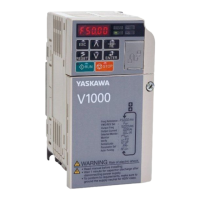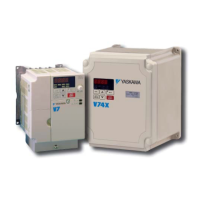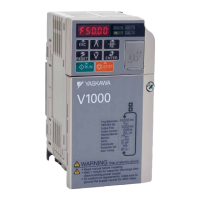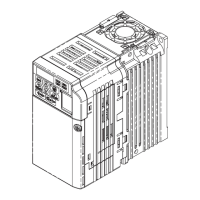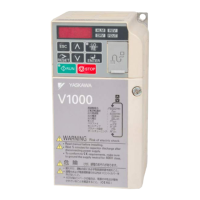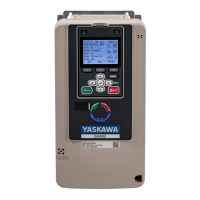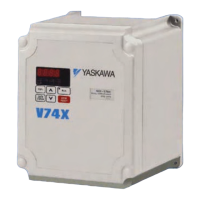6.2 Motor Performance Fine Tuning
This section offers helpful information for counteracting oscillation, hunting, or other faults that occur while performing
a trial run. Refer to the section below that corresponds to the motor control method used.
Note: This section describes parameters that are commonly edited. Consult Yaskawa for more information on detailed settings and fine-tuning
the drive.
u
V/f Motor Control Method Tuning
Table 6.1 Parameters for Tuning the Drive in V/f Motor Control Method
Problem Parameter Corrective Action
Default
Value
Suggested
Setting
• Motor hunting and
oscillation at speeds
between 10 and 40 Hz
Hunting Prevention
Gain (n1-02)
• If
insufficient motor torque relative to the size of the load
causes hunting, reduce the setting.
• When motor hunting and oscillation occur with a light
load, increase the setting.
• Lower this setting if hunting occurs when using a motor
with a relatively low inductance, such as a high-
frequency motor or a motor with a larger frame size.
1.00 0.10 to 2.00
• Motor noise
• Motor hunting and
oscillation at speeds up to
40 Hz
Carrier Frequency
Selection (C6-02)
• If the motor noise is too loud, increase the carrier
frequency.
• When motor hunting and oscillation occur at speeds up
to 40 Hz, lower the carrier frequency.
• The default setting for the carrier frequency depends on
the drive capacity (o2-04) and the Drive Duty Selection
(C6-01).
7 (Swing
PWM 1)
1 to A
• Poor torque or speed
response
• Motor hunting and
oscillation
Torque
Compensation
Primary Delay Time
(C4-02)
• If motor torque and speed response are too slow, decrease
the setting.
• If motor hunting and oscillation occur, increase the
setting.
200 ms
<1>
100 to 1000 ms
• Poor motor torque at speeds
below 10 Hz
• Motor hunting and
oscillation
Torque
Compensation Gain
(C4-01)
• If motor torque is insufficient at speeds below 10 Hz,
increase the setting.
• If motor hunting and oscillation with a relatively light
load, decrease the setting.
1.00 0.50 to 1.50
• Poor motor torque at low
speeds
• Motor instability at motor
start
Mid Output Voltage
A (E1-08)
Minimum Output
Voltage (E1-10)
• If torque is insufficient at speeds below 10 Hz, increase
the setting.
• If motor instability occurs at motor start, decrease the
setting.
Note: The recommended setting value is for 200 V class
drives. Double this value when using a 400 V class drive.
E1-08:
16.0 V
E1-10:
12.0 V
<1>
Initial value ±5 V
• Poor speed precision
Slip Compensation
Gain (C3-01)
• After setting the motor-rated current (E2-01), motor-
rated slip (
E2-02) and motor no-load current (E2-03),
adjust the slip compensation gain (C3-01).
- 0.5 to 1.5
<1> Default settings change when the Control Method is changed (A1-02) or a different V/f pattern is selected using parameter E1-03. The default
setting shown is for V/f Control.
Note: Use slip compensation to improve speed precision in V/f Control. First make sure that the proper values have been set for the motor
rated current to E2-01, motor rated slip (E2-02), and motor no-load current (E2-03). Next, adjust the slip compensation gain set to
C3-01 so that it is between 0.5 to 1.5.
6.2 Motor Performance Fine Tuning
246
YASKAWA ELECTRIC SIEP C710606 16C YASKAWA AC Drive – V1000 Technical Manual
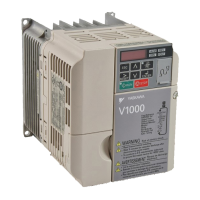
